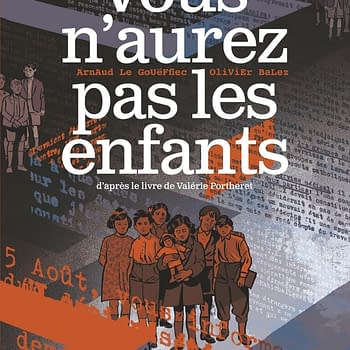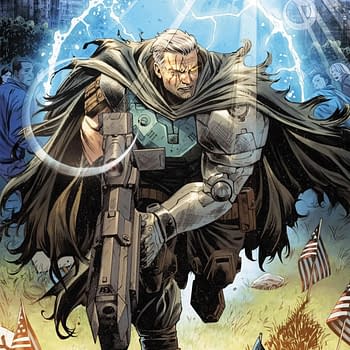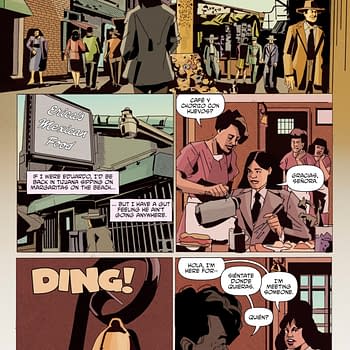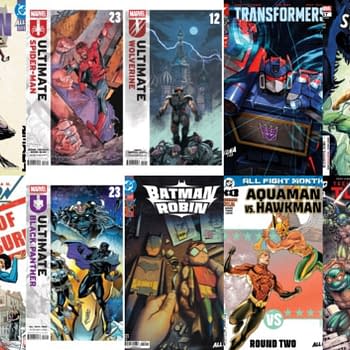Posted in: Comics, Recent Updates | Tagged: Comics, dc, dc comics, entertainment, female characters, gendercrunching, marvel, Marvel Comics
Gendercrunching January 2015 Plus Female Characters – DC Pulls Ahead
By Tim Hanley
The new year didn't exactly get off to a booming start for female creators at either DC or Marvel, but DC posted the higher percentage of female creators by rising into their average range for the first time in a while. Marvel fell again, and started the new year with a paltry overall total. We also take a look at female characters, continuing our bi-annual examination of the Big Two's books.
DC COMICS
After posting some fairly poor overall numbers to end 2014, DC kicked off 2015 by returning to their past average. DC loves 11%; there was about a year straight a while back where they barely deviated from it at all. In January 2015, DC Comics put out 79 new comic books featuring 774 credited creators, 689 men and 85 women. Here are their stats:

COMPARED TO A YEAR AGO: DC had 12.2% female creators last January, so they're down 1.2% since then.
MARVEL COMICS
I don't even know what's going on with Marvel right now. While their fall wasn't great for female creators, it was steadily in double digits until December, and now January is even lower. In January 2015, Marvel released 76 new comic books with 671 credited creators, 614 men and 57 women. Let's look at the stats:
Marvel fell only 0.4%, but their overall percentage of female creators wasn't very high to begin with. There were actually some gains in the first few categories in the 2-3% range, but colorists were down nearly 5% and assistant editors fell as well. Colorists and editors remained the same. All together, the various changes resulted in a small loss for Marvel overall. The publisher seems to be stuck in a bit of a slump on the creative side of things, with middling numbers across the board, and editorial isn't doing much to help. Given that the creative numbers contribute more to the overall total because there are a lot more of them, the middling numbers are winning out at Marvel right now.
COMPARED TO A YEAR AGO: Marvel was at 11.6% female creators overall last January, so they're down 3.1% since then.
FEMALE CHARACTERS AT MARVEL AND DC
Last January, I started a new bi-annual feature where we checked in on the female characters in the Big Two's books. The methodology is fairly simple: I go through all of the comics' primary covers, tally up all of the characters by gender, and figure out the percentages. While the covers are not necessarily representative of the characters inside the book, they're usually a pretty good indication of who you'll find inside the pages. Moreover, the covers are the publishers' primary means of advertising their books; the characters they choose to put on the covers are the characters they are trying to sell, and are thus the face of their company.
If DC and Marvel's comics accurately reflected society, the male and female characters on their covers would be split 50-50, but that has yet to be the case. In 2014, female characters on the covers of the Big Two's book in January and July averaged about 27%, so men outnumber women by about 3 to 1 thus far. Let's take a look at where we are when we add January 2015 into the mix:

The series that have debuted since July haven't done a lot to increase female representation either. The percentage of female characters among those titles is slightly better, coming in at about 32%, but that's not significantly better than 30.2% overall. Still, growth among DC's new titles, however slight, is a positive step.
Marvel ticked up 2.3% to 26.9% female characters on their covers, not a huge jump but a nice change after consistently lower numbers in 2014. Marvel remains below DC; in fact, Marvel posted their highest total thus far in January and they still have yet to reach DC's lowest total.
Marvel's debuted several new female-led titles since July, which may have contributed to their slight gain. All together, their new covers add up to more than 29%, not massively higher than the total for all of their books but a fair contribution to the publisher's growth. Moreover, adding titles like Angela: Asgard's Assassin, Spider-Woman, Thor, and Unbeatable Squirrel Girl bodes well for having more women on Marvel's comics moving forward.
Overall, after having an average of 27% female characters on their covers in 2014, DC and Marvel have started 2015 with a combined average of 28.6%. It's not a huge jump, but if we've learned nothing over the past few years of women in comics stats it's to appreciate even the slight gains. We'll check back in with the covers next July, and take a peek at how each publisher's books break down in terms of their lead characters.
To learn more about this statistics project and its methodology click here, and to see the previous stats click here. You can visit Tim at Straitened Circumstances and follow him on Twitter @timhanley01. His book Wonder Woman Unbound: The Curious History of the World's Most Famous Heroine is available now.
















